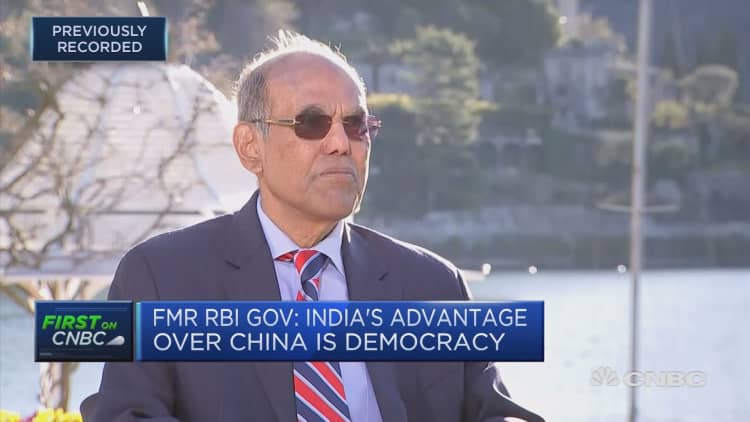India surged ahead to become the world's fastest-growing major economy in the last quarter of calendar year 2017. But the South Asian giant can do even better, potentially even hitting double-digit growth rates, according to one business leader.
This argument rests on the background of "an already robust growth rate hovering around seven percent, supported by regulatory decisions that favour manufacturing" to create jobs as well as business-friendly policy more broadly, Anil Rai Gupta, chairman and managing director at Indian electricity giant Havells, said.
"To achieve GDP (gross domestic product) growth of 10 percent, India would need the service sector to grow close to 20 percent complemented by four and eight percent growth in agriculture and industrial growth," he told CNBC via e-mail on Tuesday, adding that India's economic fundamentals were strong enough to achieve that.
The "Make in India" campaign and the country's young demographics "will not just draw a better consumption pattern for the country but also push the overall growth rate towards the double digit mark," he explained. India is the world's second most populous nation after China, with approximately 1.3 billion people.
Indian Prime Minister Narendra Modi's government has implemented two major economic changes in the past 18 months — though the reforms' chaotic introduction initially hit economic growth. In November 2016, it was announced at short notice that 500 and 1,000 rupee notes were to be withdrawn from circulation in an attempt to curb counterfeiting. July last year marked the introduction of the Goods and Services Tax, unifying sales tax across all Indian states.

But, for another expert on India's economy, the ceiling on GDP growth is due to the country's management of its labor force.
"India certainly has the labor force to grow (its economy) that quickly ... and it is young," Derek Scissors, an expert on the Indian economy at U.S.-based think tank the American Enterprise Institute, told CNBC via e-mail in March. Still, he expressed skepticism that the population was being put to effective use.
"A very large chunk of the labor force is stuck on very small plots of land providing no value added," he said. "Labor laws requiring government approval for firing anyone from a medium-sized or large firm discourage hiring."
"India can grow faster than at present but there's no evidence (the country) can hold 9 percent GDP growth, and certainly not 10 percent," Scissors argued. "As soon as it gets into the 8s inflation spikes because supply capacity is inadequate to meet that pace of demand increases."

